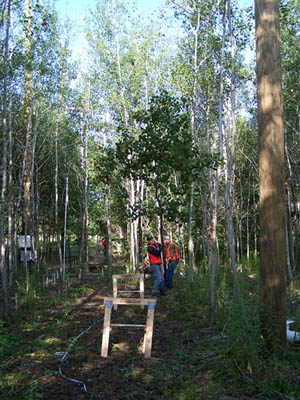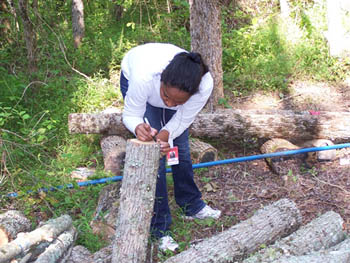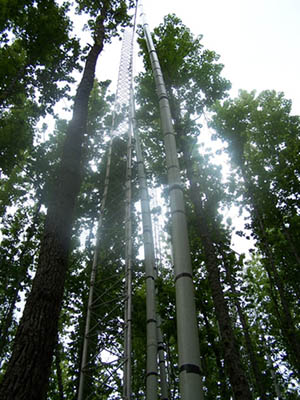An unprecedented rise in atmospheric carbon dioxide (CO2) levels has occurred over the past 100 years. This trend is expected to continue with levels predicted to increase by 50% over the next 50 years. Increased atmospheric CO2 is known to affect the growth of plants, but the long-term effect on forest health and biomass characteristics were unknown. The FACE (Free Air Carbon Enrichment) sites were designed to investigate the impacts of increased CO2 on an ecosystem scale. Operated by the U.S. Department of Energy (DOE), the Oak Ridge National Lab (ORNL) FACE site was launched in 1997 and closed-out in 2009. The ORNL site primarily described physiological or ecosystem level responses to elevated CO2. The impacts of changing atmospheric chemistry on the properties of woody biomass that ultimately define utility were investigated in partnership with ORNL. Details on the ORNL FACE project and other FACE studies, including final reports and data downloads, are available at the DOE Environmental System Science Program site.
To study mature trees that had developed for 10-years in a field FACE experiment presented an unprecedented opportunity to assess long-term changes in wood properties. If scientists are right and the CO2 trend continues, the level of CO2 applied to the site (525-555 ppm) will be reached by 2050. Therefore, trees and other woody biomass will have to adjust to these environmental changes and grow under a much higher level of CO2.
The implications of the work extend beyond the fundamental science relating atmospheric chemistry to tree growth and wood properties. Sweetgum, pine and aspen are important commercial species that are used for lumber, furniture, and other forest products. They are also being studied as a bioenergy crop. As such, it is important to understand how future conditions will influence strength properties, cell wall structure, and chemical composition. This information will also be relevant to other important commercial timber species, providing guidance on utilization potential in the future.
This study provided data valuable for understanding trees’ responses to changing atmospheric CO2 and O3 and in converting effectively biomass grown under shifting environments. The goal was to assess wood properties grown under long-term exposure to elevated carbon dioxide (CO2).
This project was a collaborative effort between the University of Tennessee, Oak Ridge National Laboratory, and the USDA Forest Service.
Principal Investigators: Drs. Timothy Rials, Nicole Labbé, David Harper, Joe Bozell, Siqun Wang, Timothy Young.
For additional information, please contact Dr. Nicole Labbé
Page updated 15-Aug-2022




